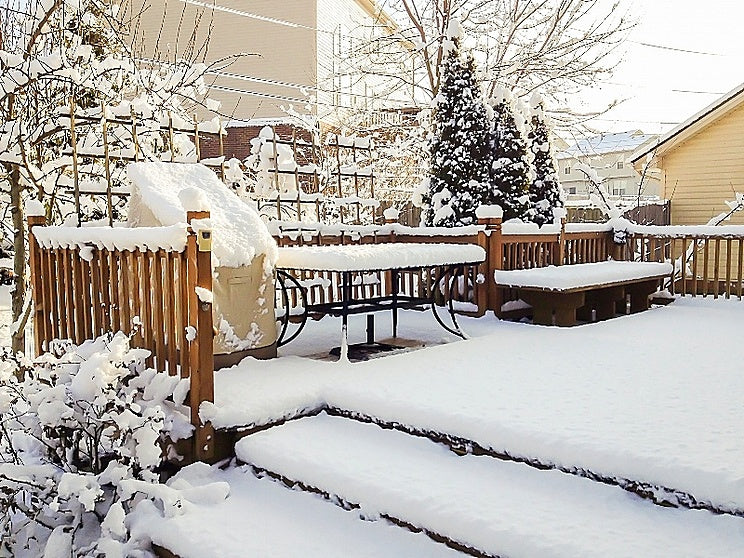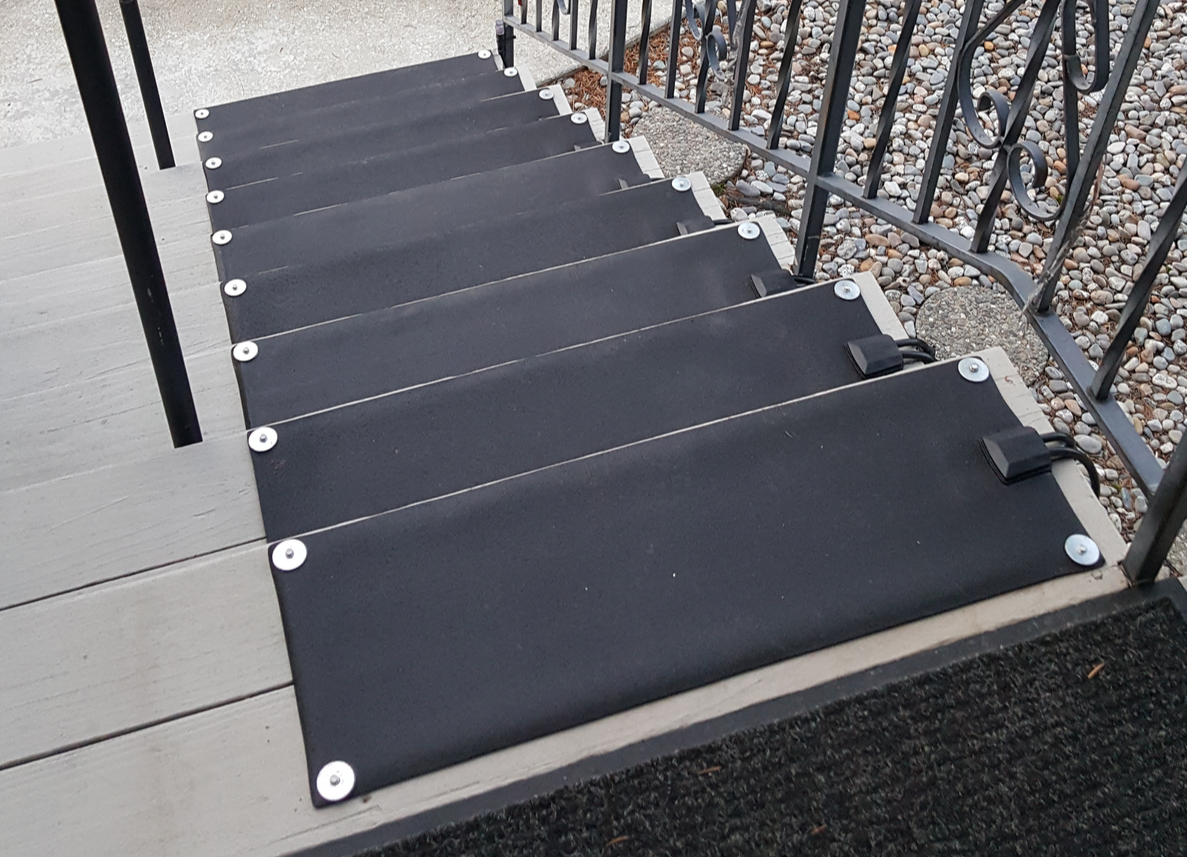
Did you know that snow, ice and moisture are incredibly damaging to your patios and outdoor spaces? While we expect some wear and tear on our patios each winter season, snowstorms can accelerate the aging process. Regardless of the material of your patio, all surfaces incur damage from snow and ice.
In this post, we break down why these damages occur and how to diminish the worst of them in the future with proper snow removal methods.
The cycle of freezing and melting snow takes a toll on all surfaces due to the expansion of the material when water is absorbed and the contraction that occurs when water freezes. Damages such as cracking and splitting can mean partial or full replacement of patio surfaces will be necessary. In order to get the most out of your patios for your summer enjoyment, you’ll find that protecting them during the winter (while protecting yourself from slip-and-falls) is the key to long-lasting patios.
Heated snow removal mats are a great way to protect your patios and outdoor spaces while melting snow and ice. Patios that use wood, cement or stone can all benefit from heated floor mat placement in the winter. Not only will they allow you to access your outdoor spaces in the winter, but they will ensure that the damaging freezing and thawing cycle on your decks, patios and outdoor surfaces is diminished. While it depends on how long the mats have been turned on and what the ground surface is made of, HeatTrak mats can add longevity to your outdoor spaces and cut down on property maintenance repairs and fees.
When it comes to ordering heated floor mats for your outdoor spaces, we recommend measuring your patio or outdoor space to understand the specifications of your order. Keep in mind, if you turn the mats on a few hours before a snowfall, chances are you will have snow build-up along the 1.5" (3.81 cm) perimeter of the mat. This is because there are no heating elements inside this area of the mat. However, if the mat has been turned on for a full day or so before the snowfall, then the heat from the mat will have absorbed into the ground and spread beyond the mat by about 1 - 2" (2.54 - 5 cm).
In this case, you will have snow melting coverage well beyond the size of the mat. This is especially true if the ground surface is cement or concrete, where heat is easily retained. This will not be the case if the surface is wood - so if you are attempting to create full coverage over a wooden patio, you’ll want the mats to be touching.
As you can see, using heated floor mats go a long way in property maintenance and keeping your home in top condition year-round!


